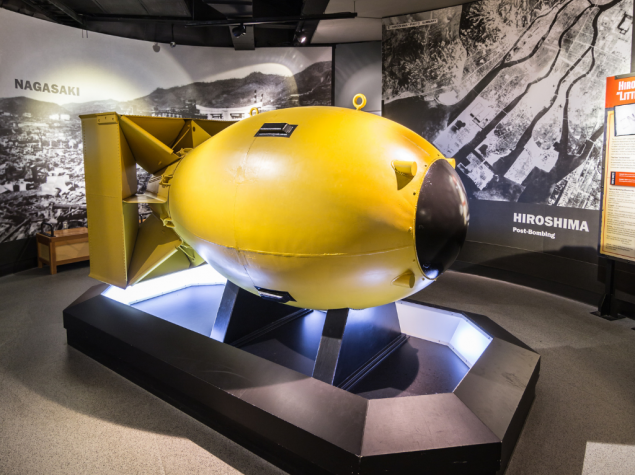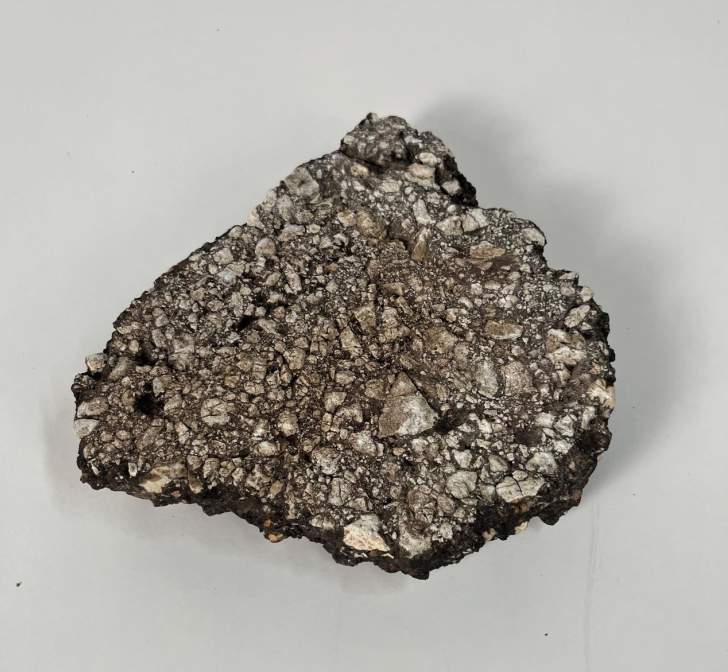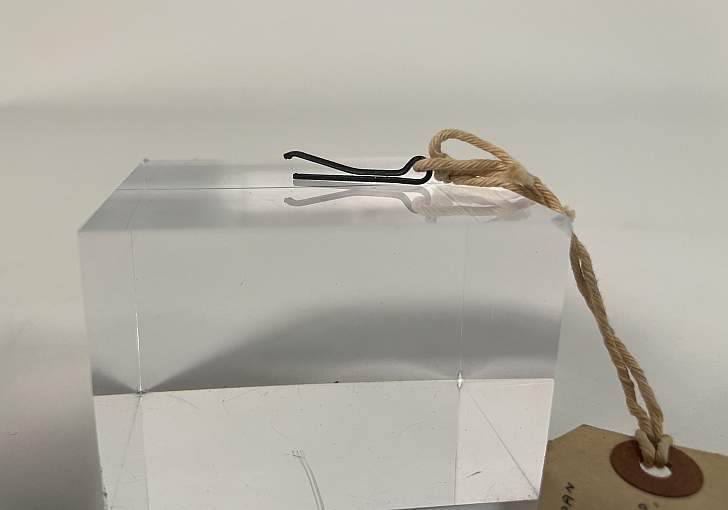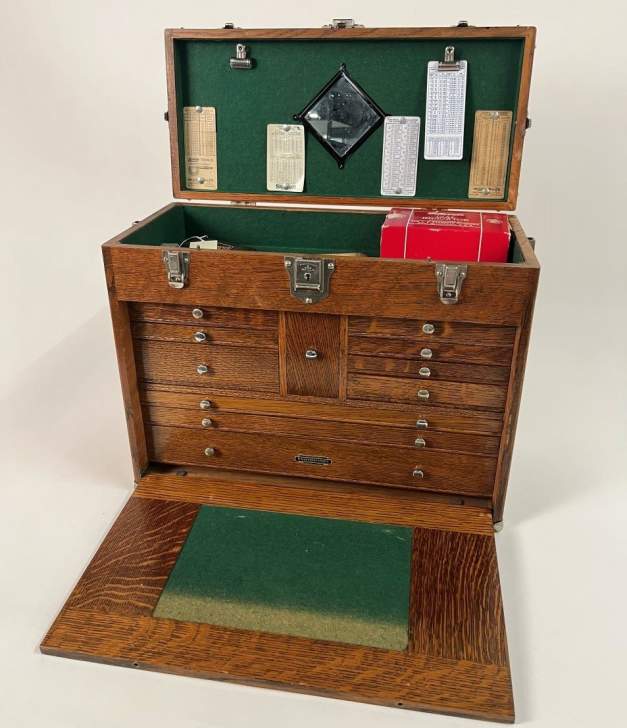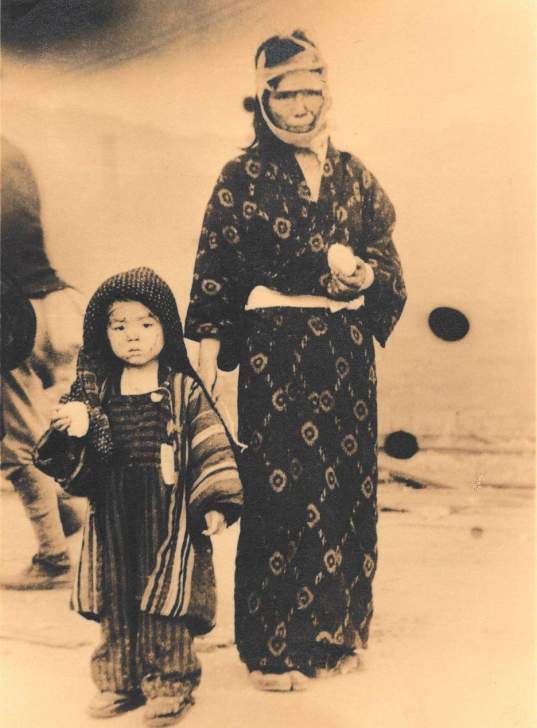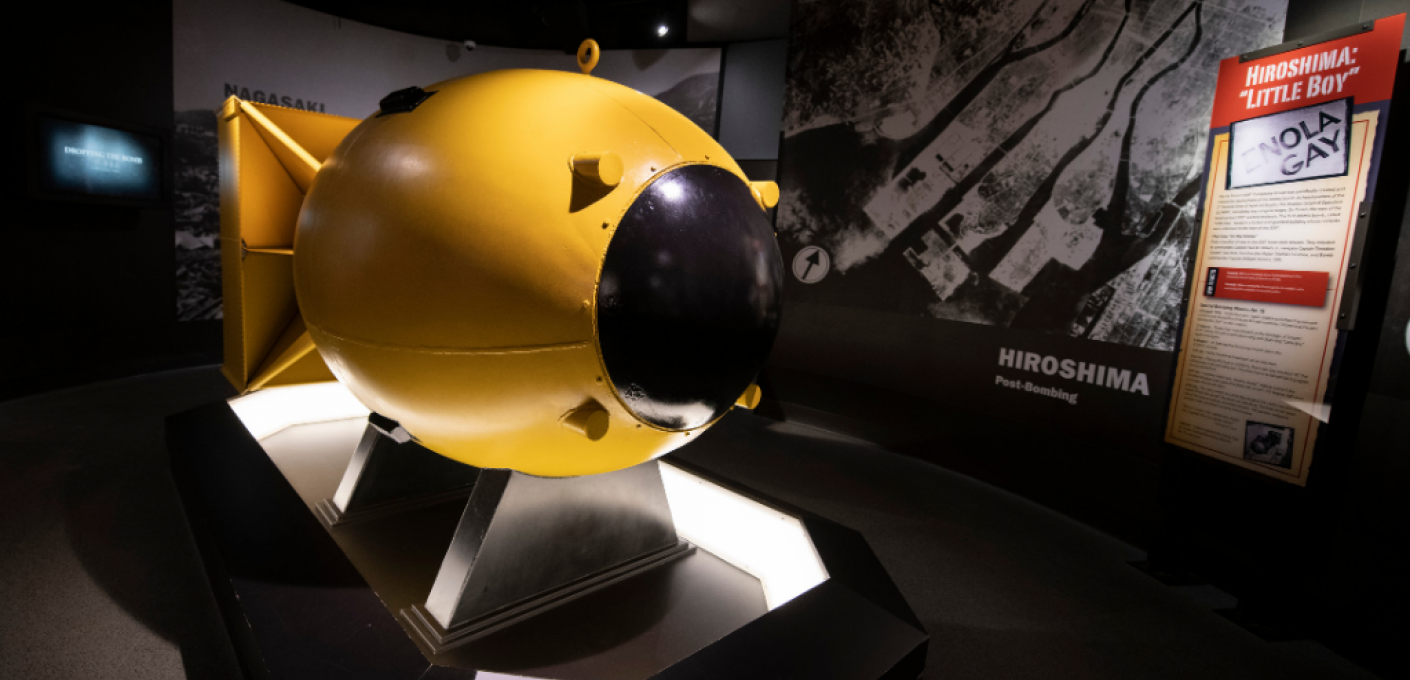
Online Exhibit
Overview
This exhibit tells the story of the atomic bomb from the development stages to the effects of the bombings on Hiroshima and Nagasaki in August 1945.
In May of 1945, Germany surrendered to the Allies, but in the Pacific, war with Japan raged on.
Thousands were killed in the bloody Battle of Okinawa, and the Allies knew they had to end the war quickly to avoid even more deaths from the upcoming invasion of Japan. The United States had a secret weapon, the atomic bomb, which they had been working on since 1939. In July 1945, President Harry Truman decided it was time to use it.

Mk-3 Fat Man, Atomic Bomb Casing on loan from the National Museum of Nuclear Science and History
Truman, Josef Stalin, and British Prime Minister Clement Attlee met at Potsdam, Germany to discuss terms of Japanese surrender. They warned that the Japanese would be destroyed if they refused, but the Japanese rejected the Potsdam Declaration. In early August 1945, using the specially developed B-29 bomber planes, the Americans dropped two atomic bombs on Japan, killing thousands. This was a game-changer in the war and shaped the future of the 20th century.
Featured Artifact
The Atom Bombs: Bomb Casing
This section describes the bombing missions which dropped the atomic bombs on Hiroshima and Nagasaki.

